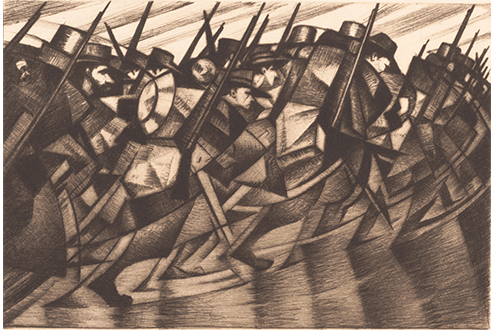
The World Wars had such an impact on culture and the visual arts that historians use them as a categorical benchmark — “pre- and post-war.” In just a few weeks, the Metropolitan in New York aims to explore the impact of World War I on the visual arts through this gripping exhibition.
On July 31, the Metropolitan Museum in New York City will open a disturbingly beautiful exhibition aimed at detailing the major impact that war — specifically World War I — had on the visual arts. On view through January 7, “World War I and the Visual Arts” is a moving exploration into how early 20th-century artists both reacted to and represented the horrors of modern warfare. According to the museum, “The works on view will reflect a variety of responses, ranging from nationalist enthusiasm to more somber reflections on the carnage and mass devastation that resulted from the war.”
Among the artworks included in the exhibition are prints, drawings, photographs, paintings, illustrated books, posters, periodicals, trading cards, and sculpture. Continuing, the Met writes, “[The exhibition] will reveal how artists — including Otto Dix, Fernand Léger, George Grosz, Käthe Kollwitz, C.R.W. Nevinson, Gino Severini, and Edward Steichen — reflected a myriad of styles, approaches, ideologies, and mediums in response to the war. Among the styles represented are Cubism, Dada, Futurism, Expressionism, New Objectivity, and Vorticism.
“Like their countrymen, many artists, writers, and intellectuals initially welcomed the war for a range of reasons — some because of nationalist sentiments, others due to a naïve desire to experience an adventure they assumed would be over in a few months, and still others because of a mistaken belief that, after this final conflict, a more peaceful, spiritual, and anti-materialist era would begin. Numerous artists experienced combat firsthand, either as soldiers, medics, or war artists documenting life at the front; many suffered severe injuries and some even death. As the reality of the war became apparent, several figures changed their positions to express fierce condemnation, mournful regret, or pacifist sentiments.”
To learn more, visit the Metropolitan.
This article was featured in Fine Art Today, a weekly e-newsletter from Fine Art Connoisseur magazine. To start receiving Fine Art Today for free, click here.







